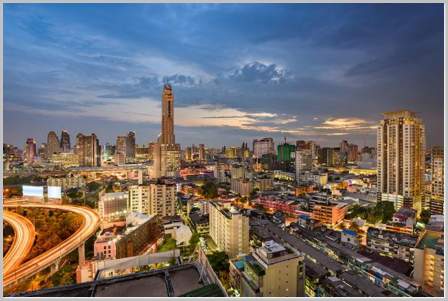
Beginning with the basic definitions:
A metropolis is one city with a population of half a million or more residents that sits at the core of an “agglomeration” of smaller urban entities that merge into a continuous built up area. A megalopolis is a regional, spread out conglomeration of various open spaces, towns and cities.
Factors that are considered in identifying a metropolis include whether the big city is at the core of an “agglomeration” or grouping of suburbs and other spaces that have a total population of more than 1 million. Some cities meet the population requirement for a metropolis, but are not at the core of an “agglomeration”. Such a city can be considered a part of a metropolis, but not a metropolis in it’s own right.
A metropolis also serves as the core of the region’s economic, communications, infrastructure, culture and other important elements of society. When there are larger political, regional, infrastructure, transportation, international or national interests, the metropolis serves as the hub.
A megalopolis (or megacity) is an extensive region of metropolises, agglomerations, and urban areas that are connected into a continuous area of urban development. A population of 10 million within this connected structure qualifies an area as a megalopolis. But rural and open spaces can also be included in megalopolises.
The more prominent megalopolises in the United States include the “BosWash”, or “Gottman’s Megalopolis”. This megalopolis includes Boston, Hartford, New York City, Philadelphia, Baltimore, a few other areas, and Washington D.C. When the large areas of farmland and open space in the “BosWash” are remembered, then the form of the true megalopolis becomes less confusing.
The second largest megalopolis in the US is “So Cal”, which includes Los Angeles, Santa Ana, San Diego, Riverside, and San Bernardino. Again, “So Cal” includes massive areas of farmland, forest, mountain and coastline that show no population or development, yet these areas are within the confines of contiguous development that contains a population of more than 10 million, with many cities that have populations of more than half a million, and a central metropolis that serves as a “hub”.
Other areas, such as the San Francisco Bay Area, are defined in some sources as megalopolis and left out of others.
In Japan, Tokyo, Kawasaki, and Yokohama form the Capital zone. Osaka, Kobe and Kyoto are part of the Keihan zone.
On the African continent, the first megalopolis includes the cities of Johannesburg, Pretoria, and the cities of the Vaal Triangle
Reference:
Economic Expert.com
About.com/Geography

